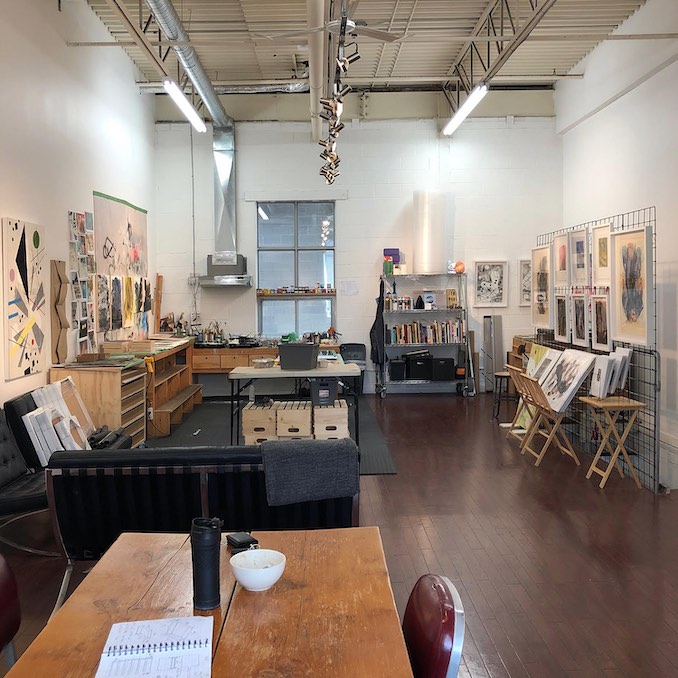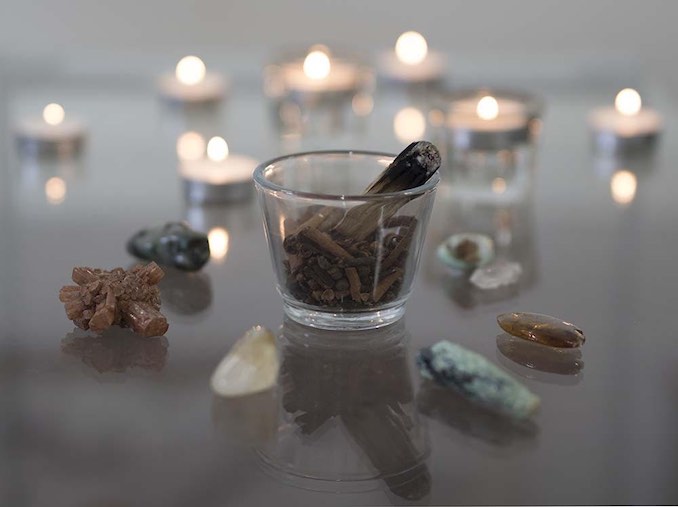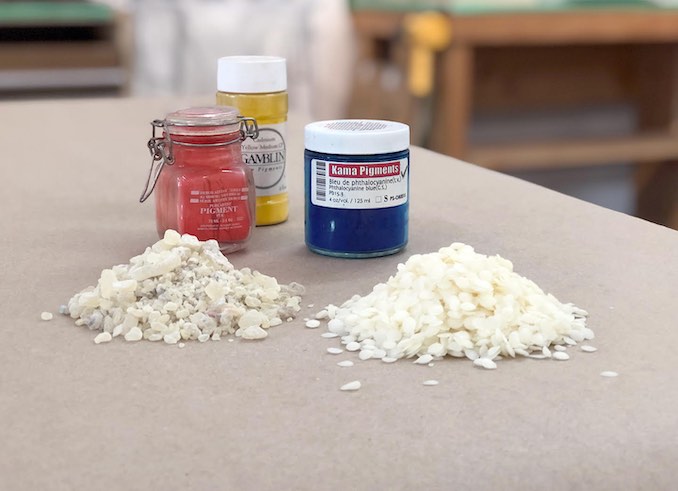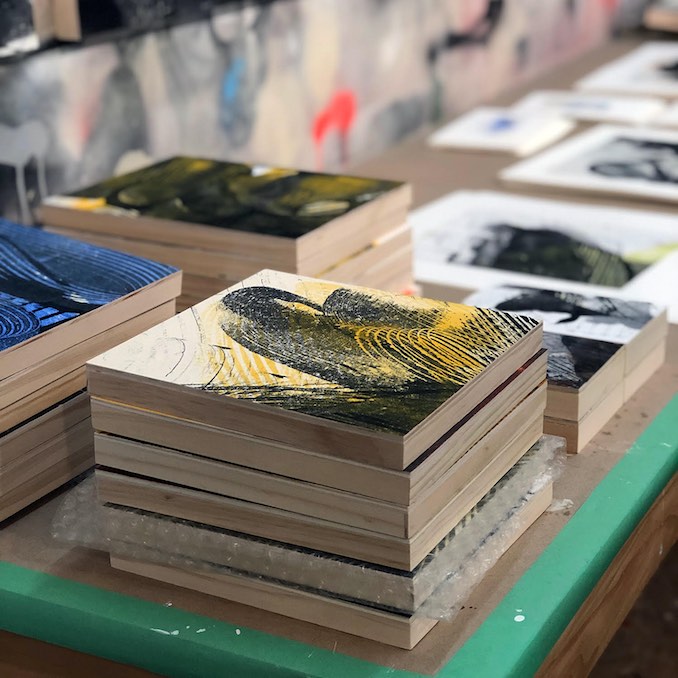To visit David Brown’s studio is to slip through the looking glass into a magical space where ideas and observation blend, becoming something marvellous and new in the process.
From small drawings to large canvases, his imagery presents itself with a cohesive authority, resonating at once a childlike joy and an engineer’s exactitude. The encaustic paintings are the precognitive dreams of 20th century abstract expressionism: sharp-edged geometric shapes and lines float above translucent fields of gestural scribbles, as if the artist’s conscious thoughts are clouds scudding above the surface of a boiling subconscious sea.
The monumental work is displayed alongside small collections of found items, from delicate crystals and battered pieces of wood to the wound-up innards of a baseball. These are sacred objects, and pair perfectly with the paintings which become stained-glass windows to an invisible temple of the mind.
Brown is an alchemist in the classical sense, using the furnace of the imagination to create gold from the humblest of materials. He invites us to share his secrets, even if he refrains from telling us exactly what they are.
-Aaron Leighton, a very dear friend and fellow artist.








What ‘hood are you in?
Parkdale in Downtown Toronto.
What do you do?
I am an abstract encaustic painter. I also make encaustic monotypes. I love to take photographs.
Encaustic painting, is an ancient art form and was practised by artists as far back as the 5th century B.C.. The word encaustic comes from the Greek language and means “to burn in”, which refers to the process of fusing the paint. The technique uses heated wax to which coloured pigments are added. The molten wax is applied to a firm surface–usually prepared wood, paper or canvas.
Encaustic has a long history, but it is as versatile as any 20th century medium. Brushes are used to apply and shape the wax before it cools, then it can be polished to a high gloss, it can be modelled, sculpted, textured, and combined with collage materials. The wax cools immediately, so that there is no drying time, yet it can always be reworked. Encaustic paintings do not have to be varnished or protected by glass.
“But will it melt on a hot day?”
I get asked this question all the time. The answer is No. The working temperature for the liquid wax is 225 degrees, so unless you are living in an oven the work will be fine hanging in your living room. But, just like any artwork, it is not a good idea to keep it in an area where it will be exposed to direct sunlight or extreme temperatures.
Encaustic Monotypes are one of a kind non-repeatable prints. It is an elegant process were pigmented wax is melted on a heated metal surface and then transferred to a sheet of paper. No printing press is required just wax, heat, paper and gentle hand pressure. These four variables allow endless and unpredictable results. The compositions evolve by adding and subtracting elements using customized silicone scrapers and brushes. The final results combine the directness and immediacy of traditional printmaking with the richness and luminosity of the encaustic medium.
What are you currently working on?
I have a solo show coming up in November at Liberty Arts in Toronto. I am busy getting ready for this exhibition where I will show a mixture of my paintings and monotypes.
This collection manifests itself in tactile amalgams of strength, beauty and 21st century self expression. Using gestures, lines and geometric forms to convey actions and emotions, I layers many single elements creating a visual symphony. The encaustic medium offers varied surfaces, translucent dimensions and lustrous colours all combined to emanate feelings of passion and energy.
Where can we find your work?
Liberty Arts
November 5-28, 2019
Opening Reception:
Thu, Nov 7, 6:30-10:30pm
25 Atlantic Avenue, Toronto
Gallery Hours:
Mon-Fri, 10am-6pm
Or better yet, come visit me at my studio and I can show you my process.




